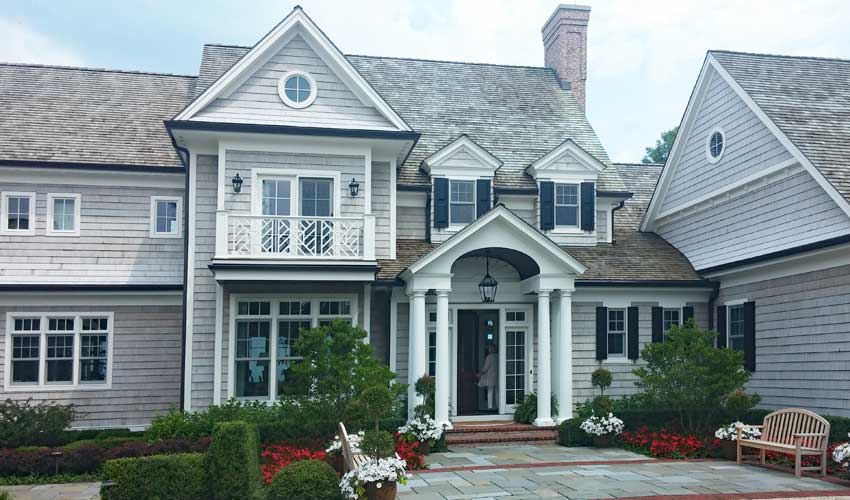Good House Forms Can Catch Your Eye

Have you ever been walking or driving along and had your attention grabbed by a house? It happens to me a lot. Maybe that’s because I’m an architect. But I think it happens to everyone. There is something about a good house form that can really catch your eye.
You might not know exactly what I mean by a “good house form.” We architects often use the word “massing.” This refers to the overall shape and bulk of a building. It’s the shape of the structure and roof line in its gross form. It ignores the finer details. It relates to composition, balance, visual flow and a lot of other artistic terms that even professionals have trouble expressing in words. But a good house form is one we know when we see it. One way to evaluate a house form is to stand back and squint at it. This will keep the details from confusing your mind. A good house starts with a good house form. The details will further enhance it, making it even better. But it’s hard to save a bad form with expensive materials and details. A house has to have “good bones.”
I drive by this house frequently and every time I find myself giving it a good look. So one day I stopped and took this picture so I could see it in more detail without driving into a ditch. What’s very curious about it is that it breaks many of the “rules” of design. You could call it a little squat and inelegant. You could criticize the arbitrary gable that was placed on the front. Most of us would have been compelled to center the front door below this gable and certainly add another window in the center on the second level to help make the gable “frame” some other elements. You could say that the portico is skimpy and the gingerbread ornamentation is contrived. You could even say that the paint scheme is a bit cutesy. And you would be correct on all counts.
But don’t the heavy chimneys frame the house nicely? Doesn’t the gable-topped bay around the side of the house complement the one on the front wall, bringing the side porch into the composition and forcing you to look at the house in three dimensions? And did you even notice the complete lack of foundation planting? The only real landscaping are the two large, flanking trees. But even in winter with leafless trees, doesn’t this house simply “feel” good?
Just as in this house, good house forms are much more than the sum of their parts. They are a synthesis of many things. And they often ignore the rules with pleasing results. These are some of the intangibles you need to consider when Designing Your Perfect House.
I hope this information is helpful to you. You might want to get yourself a copy of my best-seller, Designing Your Perfect House. It is chockfull of valuable tips and advice that will save you many times the cost of the book on your house building or remodeling project. You might also like The Well-Centered Home: Simple Steps to Increase Mindfulness, Self-Awareness, and Happiness Where You Live. It will show you how to make your home a happy place.

